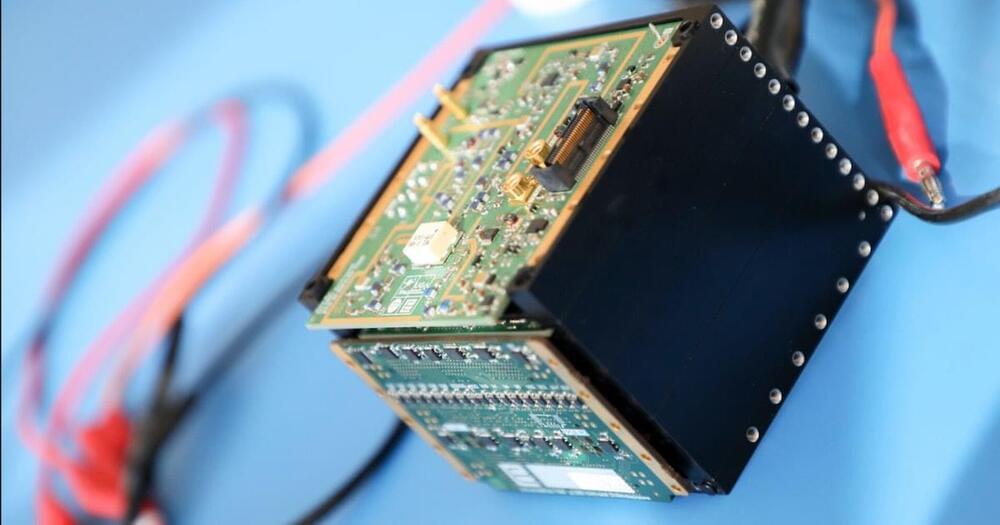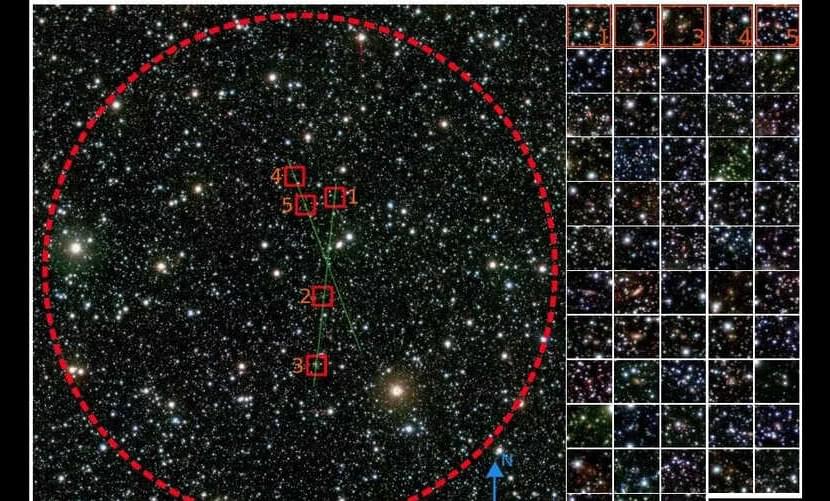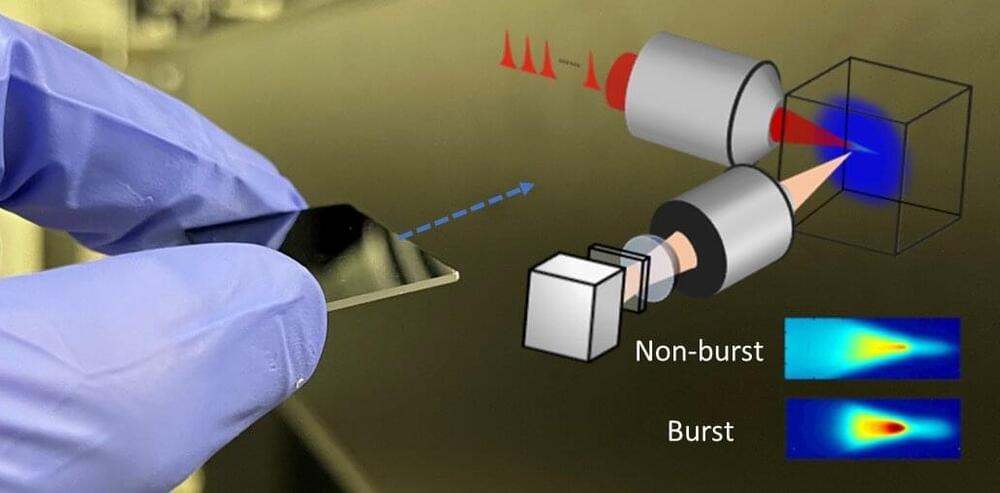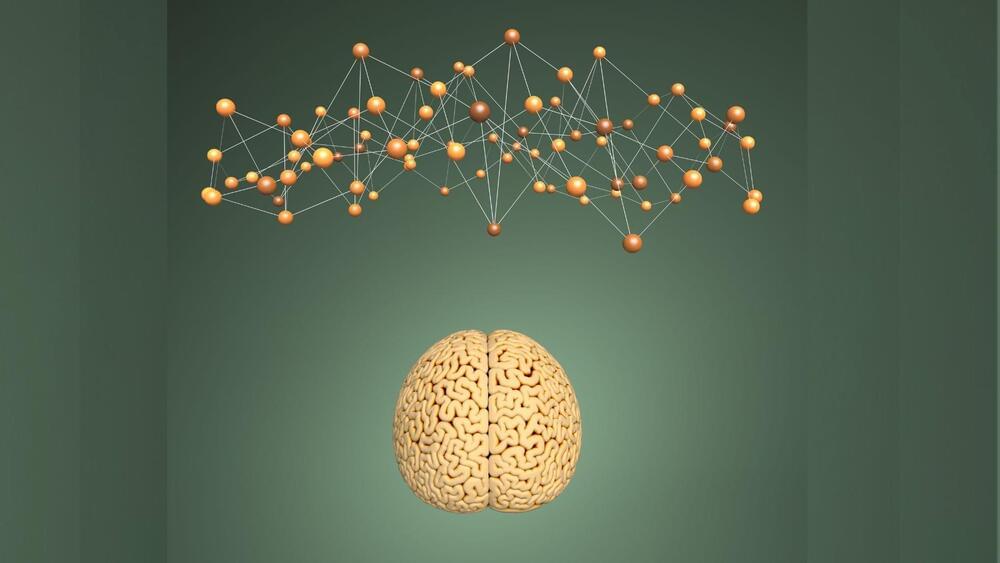Yes, conceivably. And if/when we achieve the levels of technology necessary for simulation, the universe will become our playground.





Astronomers have detected an enormous extragalactic structure hiding in an uncharted region of space far beyond the Milky Way ‘s center.
This phantom region, known as the zone of avoidance, is a blank spot on our map of the universe, comprising somewhere between 10% and 20% of the night sky. The reason we can’t see it — at least with standard visible light telescopes — is because the Milky Way’s bulging center blocks our view of it; the center of our galaxy is so dense with stars, dust and other matter that light from the zone of avoidance gets scattered or absorbed before reaching Earth’s telescopes.
However, researchers have had better luck uncovering the zone’s secrets with telescopes that can detect infrared radiation — a type of energy that’s invisible to human eyes, but powerful enough to shine through dense clouds of gas and dust. Infrared surveys of the zone of avoidance have found evidence of thousands of individual galaxies shining through the cosmic fog, though little is known about the large-scale structures that lurk there.

Researchers from LP3 Laboratory in France developed a light-based technique for local material processing anywhere in the three-dimensional space of semiconductor chips. The direct laser writing of new functionalities opens the possibility to exploit the sub-surface space for higher integration densities and extra functions.
Semiconductors remain the backbone material of the electronics integrated with modern devices such as cellphones, cars, robots and many other intelligent devices. Driven by the continuous need for miniaturized and powerful chips, the current semiconductor manufacturing technologies are facing increasing pressure.
The dominating manufacturing technology, lithography, has strong limitations when addressing these challenges, given its surface processing nature. For this reason, a solution to fabricating structures under the wafer surfaces would be highly desirable so that the full space inside the materials could be exploited.

Combinatorial problems often arise in puzzles, origami, and metamaterial design. Such problems have rare collections of solutions that generate intricate and distinct boundaries in configuration space. Using standard statistical and numerical techniques, capturing these boundaries is often quite challenging. Is it possible to flatten a 3D origami piece without causing damage? This question is one such combinatorial issue. As each fold needs to be consistent with flattening, such results are difficult to predict simply by glancing at the design. To answer such questions, the UvA Institute of Physics and the research center AMOLF have shown that researchers may more effectively and precisely respond to such queries by using machine learning techniques.
Despite employing severely undersampled training sets, Convolutional Neural Networks (CNNs) can learn to distinguish these boundaries for metamaterials in minute detail. This raises the possibility of complex material design by indicating that the network infers the underlying combinatorial rules from the sparse training set. The research team thinks this will facilitate the development of sophisticated, functional metamaterials with artificial intelligence. The team’s recent study examined the accuracy of forecasting the characteristics of these combinatorial mechanical metamaterials using artificial intelligence. Their work has also been published in the Physical Review Letters publication.
The attributes of artificial materials, which are engineered materials, are governed by their geometrical structure rather than their chemical makeup. Origami is one such metamaterial. The capacity of an origami piece to flatten is governed by how it is folded, i.e., its structure, and not by the sort of paper it is made of. More generally, the clever design enables us to accurately regulate a metamaterial’s bending, buckling, or bulging. This can be used for many different things, from satellite solar panels that unfurl to shock absorbers.

In an unprecedented experiment, two teams of scientists on either sides of the Atlantic have replicated a material that was previously not produced anywhere on Earth.
As NPR reports, the replication of this powerful compound could have huge implications not just for the manufacturing of high-end machinery, but also for international relations to boot.
Called tetrataenite, the primarily iron-and-nickel compound is normally able to cool for millions of years as it tumbles around in asteroids. As a press release out of the University of Cambridge notes, the researchers who worked in tandem with Boston’s Northeastern University found that if they add phosphorous to the mix, they were able to make synthetic tetrataenite.
This theolocution has been released early in an ad-free audio version for TOE members at http://theoriesofeverything.org.
Sponsors:
- Drink Trade: https://www.drinktrade.com/everything for 30% off.
- Ro Man: https://ro.co/curt for 20% off first order.
- Masterworks: https://masterworks.art/toe.
*New* TOE Website (early access to episodes): https://theoriesofeverything.org/
Patreon: https://patreon.com/curtjaimungal.
Crypto: https://tinyurl.com/cryptoTOE
PayPal: https://tinyurl.com/paypalTOE
Twitter: https://twitter.com/TOEwithCurt.
Discord Invite: https://discord.com/invite/kBcnfNVwqs.
iTunes: https://podcasts.apple.com/ca/podcast/better-left-unsaid-wit…1521758802
Pandora: https://pdora.co/33b9lfP
Spotify: https://open.spotify.com/show/4gL14b92xAErofYQA7bU4e.
Subreddit r/TheoriesOfEverything: https://reddit.com/r/theoriesofeverything.
LINKS MENTIONED:
- Michael Levin (Solo TOE podcast): https://youtu.be/Z0TNfysTazc.
- Michael Levin Theolocution With Chris Fields & Karl Friston: https://youtu.be/J6eJ44Jq_pw.
- Joscha Bach Theolocution With John Vervaeke: https://youtu.be/rK7ux_JhHM4
- Joscha Bach Theolocution With Donald Hoffman: https://youtu.be/bhSlYfVtgww.
- Joscha Bach (Solo TOE podcast): https://youtu.be/3MNBxfrmfmI
TIMESTAMPS:
00:00:00 Introduction.
00:01:55 Bach and Levin speak about each other’s work.
00:03:34 The cell functions as a neuron.
00:07:15 Software as a control pattern.
00:10:55 Disciplinary boundaries in academia.
00:14:38 The perceptron is a “toy model” of the brain.
00:18:44 How do you identify yourself as a researcher?
00:20:10 The benefits of podcasts vs. academia.
00:30:04 Beliefs of Bach’s and Levin’s that have drastically changed.
00:38:54 Memory moves outside the brain structure.
00:45:06 Engrams and memory storage.
00:47:30 The implications of transferring memory between species.
00:55:25 Weissman’s barrier.
00:59:25 The notion of “competence” (Bach’s and Levin’s largest insight)
01:12:10 Virtualization for unreliable hardware.
01:16:02 Defining “competence“
01:22:35 Bach’s issues with goals (for and against teleology)
01:27:34 Planarian goals and explicitly encoded instructions.
01:34:55 Navigation in “Morphic Space“
01:36:11 One species’ birth defect can be another’s benefit.
01:37:42 The “Intelligence Trap” and bias.
01:39:05 Application of each others’ work to their own.
01:52:25 Necessities of general intelligence in cells.

Early on Thursday morning, Hurricane Nicole made landfall near Vero Beach on Florida’s eastern coast. Because Nicole had a very large eye, nearly 60 miles in diameter, its strongest winds were located well to the north of this landfalling position.
As a result of this, Kennedy Space Center took some of the most intense wind gusts from Nicole late on Wednesday night and Thursday morning. While such winds from a Category 1 hurricane are unlikely to damage facilities, they are of concern because the space agency left its Artemis I mission—consisting of the Space Launch System rocket and Orion spacecraft—exposed on a pad at Launch Complex-39B. The pad is a stone’s throw from the Atlantic Ocean.
How intense were the winds? The National Weather Service hosts data from NASA sensors attached to this launch pad’s three lighting towers on a public website. It can be a little difficult to interpret the readings because there are sensors at altitudes varying from 132 feet to 457 feet. Most of the publicly available data appears to come from an altitude of about 230 feet, however, which would represent the area of the Space Launch System rocket where the core stage is attached to the upper stage. The entire stack reaches a height of about 370 feet above the ground.
Get a free month of Curiosity Stream: https://curiositystream.com/isaacarthur.
Giant Stars are often considered too hot and short lived to colonize, but it may be that they shall be the most powerful and pivotal systems in a future galaxy.
Visit our Website: http://www.isaacarthur.net.
Support us on Patreon: https://www.patreon.com/IsaacArthur.
Facebook Group: https://www.facebook.com/groups/1583992725237264/
Reddit: https://www.reddit.com/r/IsaacArthur/
Twitter: https://twitter.com/Isaac_A_Arthur on Twitter and RT our future content.
SFIA Discord Server: https://discord.gg/53GAShE
Listen or Download the audio of this episode from Soundcloud: Episode’s Audio-only version: https://soundcloud.com/isaac-arthur-148927746/colonizing-giant-stars.
Episode’s Narration-only version: https://soundcloud.com/isaac-arthur-148927746/colonizing-gia…ation-only.
Credits:
Colonizing Giant Stars.
Science & Futurism with Isaac Arthur.
Episode 279, February 25, 2021
Written, Produced & Narrated by Isaac Arthur.
Editors:
Darius Said.
Jason Burbank.
Keith Blockus.
Cover Art: